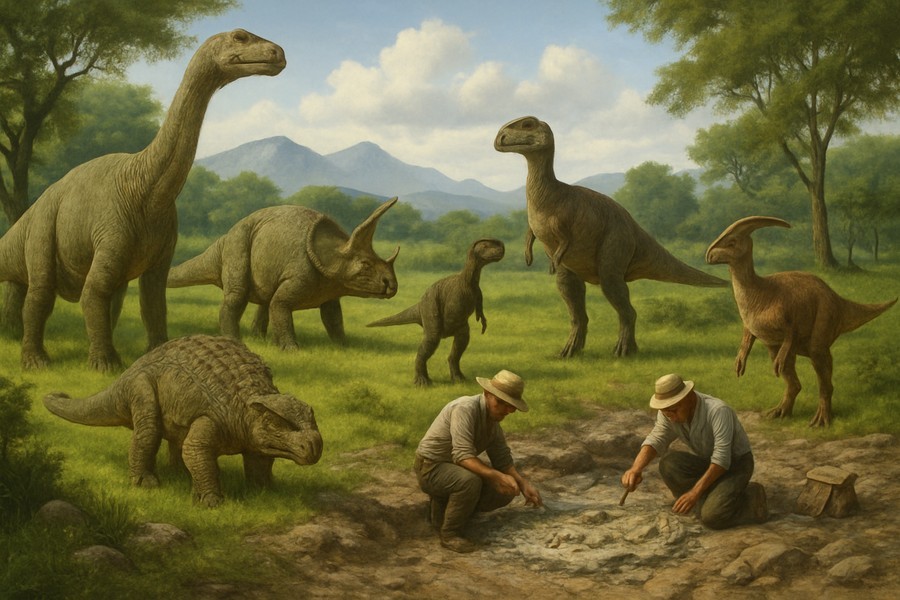
Revitalizing Theories on Dinosaur Populations Pre-Asteroid Impact
Recent scientific breakthroughs have proposed an exciting notion that dinosaurs in North America were flourishing right up until the cataclysmic asteroid impact 66 million years ago which led to their global extinction.
This revelation brings a fresh perspective to the long-standing scientific argument on whether the dinosaur population was dwindling before the asteroid hit. However, this is only a part of the larger global ecological jigsaw puzzle.
"We have discovered that not only were dinosaurs diverse, but they also lived in distinct communities before they were suddenly eradicated," stated one of the study's co-authors, Daniel Peppe, a well-known paleontologist.
Unearthing New Evidence
The latest evidence has been procured from a section of the Kirtland Formation in northern New Mexico, an area known for its fascinating dinosaur fossils for almost a century.
Through meticulous analysis, scientists have determined that these fossils, along with the surrounding rocks, date back to about 400,000 years prior to the asteroid impact, a relatively short span in geological time. This was established by examining tiny particles of volcanic glass within the sandstone and by studying the orientation of magnetic minerals in the mudstone of the rock formation.
The results indicate that "the creatures whose remains were found here must have been alive near the end of the Cretaceous period," the final era of the dinosaurs, according to Mr. Peppe.
Challenging the Notion of Dinosaur Decline
The species of dinosaurs discovered in New Mexico, when compared to those found in Montana from the same time period, suggest a contradiction to the belief that the dinosaur population was in decline. The New Mexico site yielded fossils of the Tyrannosaurus rex, a massive, long-necked dinosaur, and a Triceratops-like horned herbivore.
However, scientists who were not part of the study have cautioned against drawing conclusions based on evidence from a single location, as it might not reflect the broader scenario.
"The recent findings about these last-surviving dinosaurs in New Mexico are certainly exhilarating," said Mike Benton, a palaeontologist from the University of Bristol who was not involved in the study. He added, however, that this is "just one location" and does not fully represent the complexity of dinosaur species across North America or the world during that time.
Challenges in Dating Dinosaur Fossils
Despite the fact that dinosaur fossils have been discovered on every continent, accurately determining their age has always been a hurdle, as per Andrew Flynn, a palaeontologist and co-author of the study from New Mexico State University.
Materials that can be easily dated, like carbon, do not survive in fossils. Therefore, scientists must search for surrounding rocks with specific characteristics that can be used to ascertain ages.
Future research may aid paleontologists in piecing together a more accurate picture of the range of dinosaur species that were living worldwide just before the asteroid impact, as noted by Mr. Flynn.
